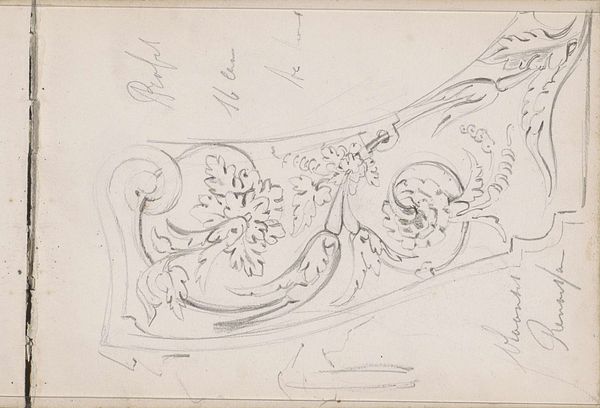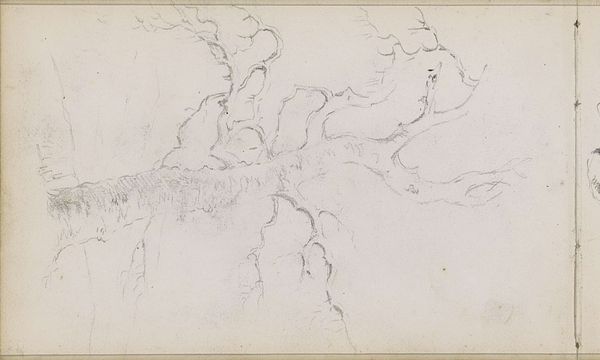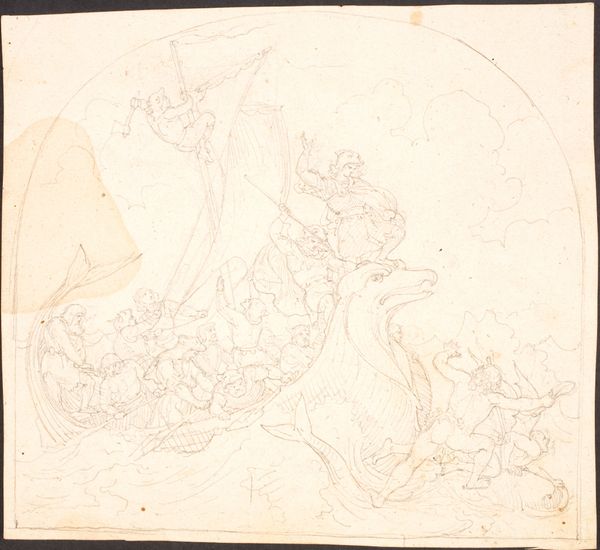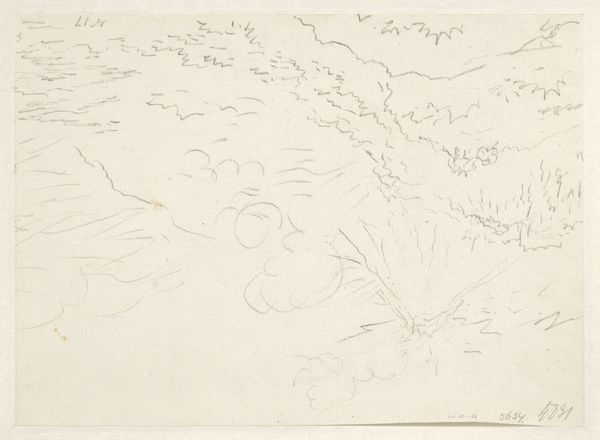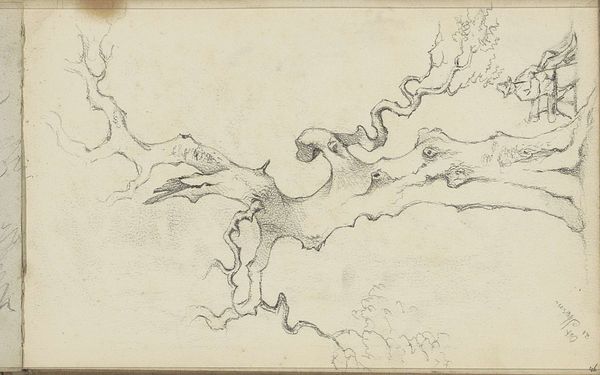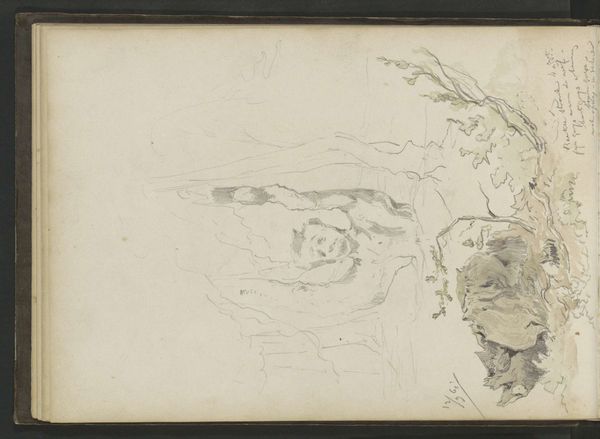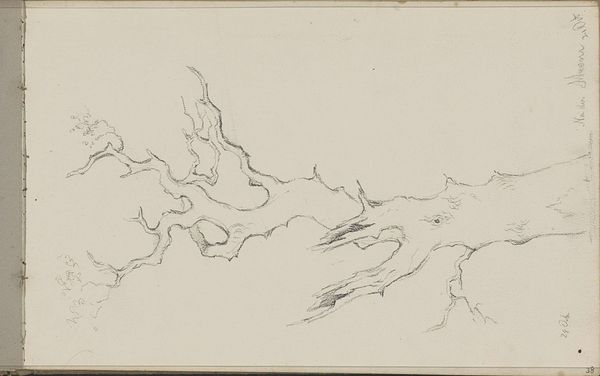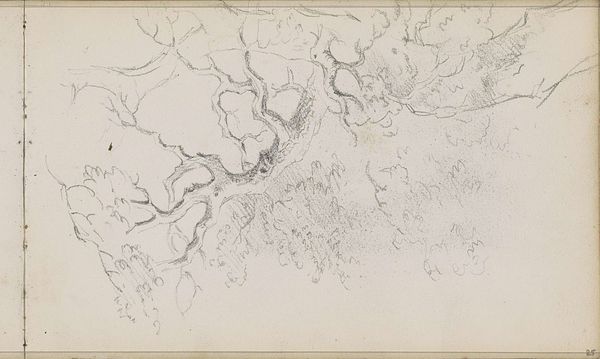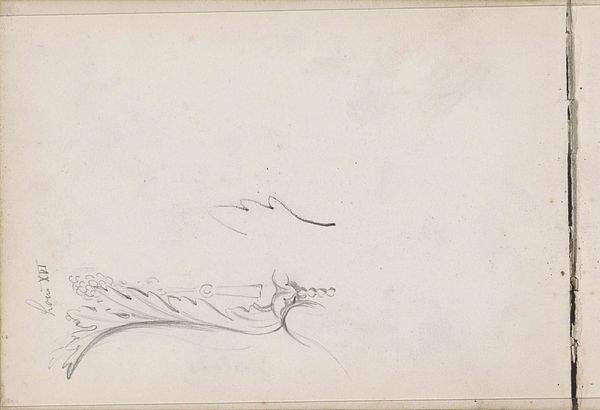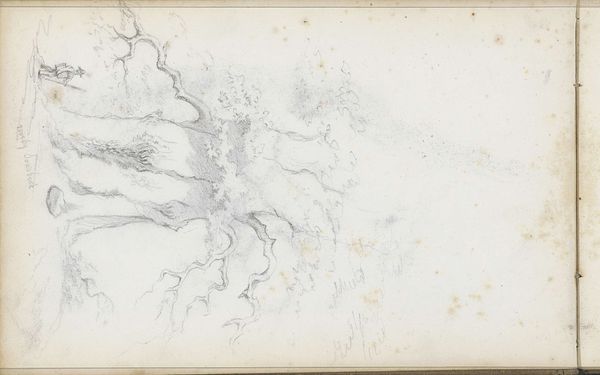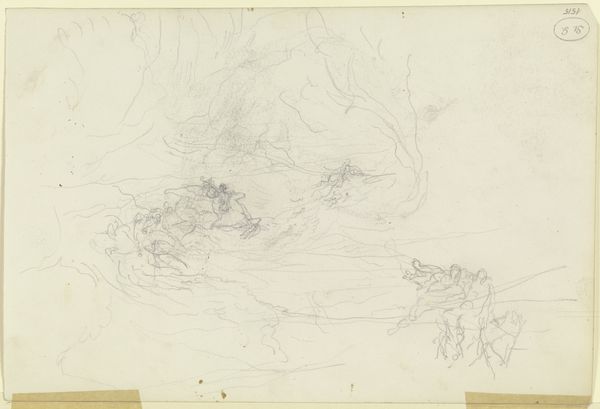
drawing, ornament, paper, pencil
#
drawing
#
ornament
#
paper
#
geometric
#
pencil
#
academic-art
Copyright: Rijks Museum: Open Domain
Curator: Jac van Looij created this drawing, "Acanthusornament," sometime between 1877 and 1880. The work is rendered in pencil on paper. What's your first take? Editor: Well, initially, I see the intricate patterns of the foliage; it suggests an exploration of idealized natural forms but it also evokes thoughts about the history and class associations embedded in ornament. Curator: Indeed. Van Looij's pencil work showcases an attention to detail common in academic art. We see meticulous layering, a dedication to representing the physical characteristics of the acanthus leaf, and the transformation of the raw plant material into cultural capital. It highlights artistic labor. Editor: Precisely, and who was this ornament for? The acanthus leaf, historically adorning architectural structures, evokes imperial power, a lineage intertwined with privilege. Van Looij, within this social milieu, becomes an active participant in shaping and disseminating status through his craft. I see it less as a simple drawing and more a contribution to a system that validates certain hierarchies. Curator: Right, examining the physical drawing allows us to consider the systems involved. What paper was used, how readily available was it, what was the cost, what pencil brands were used by academic artists at the time and their availability, what implications might those material limitations have held? The means of creating art are, after all, just as important as the finished piece. Editor: And beyond means, consequences. This wasn't simply artistic expression in a vacuum. The work helped build empires, adorn symbols of colonizers, it decorated places of wealth while so many struggled. It invites us to ask ourselves what art we support today, consciously or not, and who benefits. Curator: Certainly, viewing a work like "Acanthusornament" necessitates delving beyond mere surface admiration and prompts a deeper consideration of labor. The history of creating ornament involves countless hours of sometimes-difficult work. Editor: Absolutely, and thinking about its reproduction—was it made to decorate a book, perhaps a wall? Who held the rights to that pattern, who decided where the plant motif was appropriate and not? Such drawings can tell stories far bigger than first impressions may suggest. Curator: Absolutely. This drawing can serve as a great departure point to discussing larger materialist concerns surrounding art production, technique and availability of supplies. Editor: It truly illustrates the importance of seeing art as inextricably linked to cultural forces. Thank you.
Comments
No comments
Be the first to comment and join the conversation on the ultimate creative platform.
